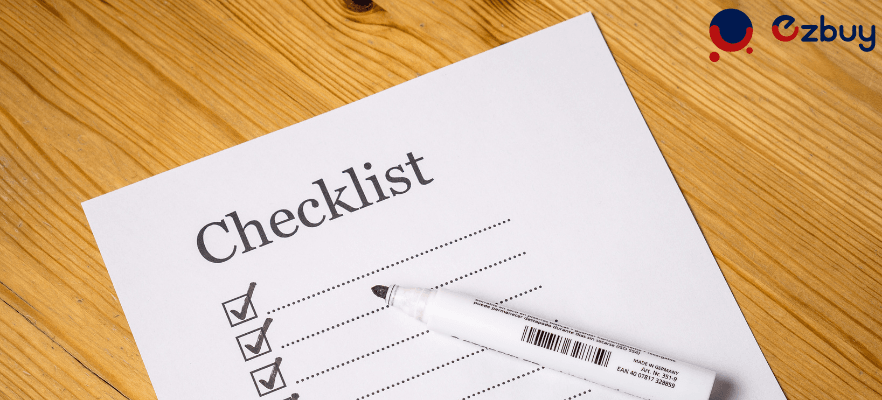International Shipping to Japan: Costs & Tips
By Macy -16/05/2025 UTC.
Japan is a major player in the global economy and a lucrative destination for international sellers and shoppers alike. Whether you’re an individual sending gifts or an e-commerce business expanding your market, shipping to Japan requires a clear understanding of logistics, costs, regulations, and best practices. That’s why this guide was created—to provide you with all the essential information to navigate the process with confidence.
In this article, you’ll learn everything you need to know about international shipping to Japan—from how much it costs and which items are restricted, to managing duties and taxes, plus step-by-step instructions and practical tips. And finally, we’ll introduce you to a powerful solution—one that’s quietly transforming how businesses and individuals ship to Japan, making the entire process faster, simpler, and surprisingly cost-effective.
Stay attentive—you won’t want to miss what’s coming next!
1. Cost of Shipping to Japan
For sellers wondering how much is shipping to japan, read this section carefully! The cost of international shipping to Japan can vary widely depending on several factors such as package weight and dimensions, delivery speed, shipping method (air, sea, or express courier), and the origin country.
We will break down every key element below so you can clearly understand what affects your shipping expenses—and more importantly, how to optimize them.
1.1. Key Factors Affecting Shipping Costs:
Weight & Size:
Naturally, heavier or oversized packages cost more to ship. Naturally, heavier or oversized packages cost more to ship. But shipping costs aren't based on physical weight alone—carriers also consider two types of weight: gross weight and volumetric weight.
- Gross Weight (GW) is the physical weight of the package, including both the weight of the product and the packaging. It is usually measured in kilograms (kg).
- Volume Weight (VW) is the volumetric weight, or the weight converted from the dimensions of the package.
Calculation Formula:
- VW = (Length × Width × Height in cm) / 6,000 → Unit: kg
This formula applies to packages shipped via air cargo. - VW = (Length × Width × Height in cm) / 5,000 → Unit: kg
This formula is used for express air shipping services (e.g., couriers like DHL, FedEx).
That means even if your package is light, large or bulky items may cost significantly more due to the space they take up on a plane or truck. This is especially important for e-commerce businesses shipping soft goods, apparel, or anything in oversized packaging. Thus, it is advisable to minimize space and choose right-size packaging to avoid paying for unnecessary volume.
Shipping Method:
Your choice of shipping method significantly affects both cost and delivery speed. Air freight is faster but more expensive than sea freight, while express couriers like DHL or FedEx provide the quickest delivery, though at a premium. Standard international shipping typically takes 5–15 business days, while express options can deliver within 2–5 days.
Here’s a quick comparison of the main options:
- Air Freight: Best for faster delivery of medium to large shipments, but generally more costly.
- Sea Freight: Ideal for bulk or heavy cargo with lower costs, though transit time can range from several weeks to over a month.
- Express Couriers (DHL, FedEx, UPS): Offer fast, door-to-door delivery with tracking—perfect for time-sensitive shipments, but at a higher price.
- Postal Services (EMS, ePacket, Registered Mail): Budget-friendly for small or low-value items, with reasonable reliability and moderate delivery times.
Average Price Ranges:
Origin Location:
Shipping to Japan tends to be cheaper when originating from countries within the Asia-Pacific region compared to Europe or North America. The table below provides a comparison of average shipping costs and delivery times for a 2kg package:
Average Shipping Costs by Region (for a 2kg package):
1.2. Cost-Saving Tips for Shipping to Japan
Here are some practical strategies recommended by logistics experts at Ezbuy to help you reduce shipping costs to Japan:
- Consolidate shipments: Combine multiple items into a single package to minimize per-shipment fees.
- Compare carriers: Evaluate different shipping providers to find the best balance between cost and delivery time.
- Leverage regional partners: Use local logistics providers or fulfillment centers based in Asia to take advantage of lower regional shipping rates.
2. Duties & Taxes When Shipping to Japan

When selling across borders, customs duties and consumption taxes are an unavoidable part of international shipping, and Japan is no exception. These charges are regulated by Japan Customs and are typically calculated based on the declared value of the goods, their category, and the country of origin.
2.1. Japan’s Import Tax Structure
Generally, Japan imposes two main types of import charges:
Customs Duties
These are tariffs imposed based on the product category and country of origin.
- Duty-free: Some items, such as electronics, printed materials (e.g., books, magazines), and educational goods, may be exempt from duties.
- Subject to duty: Products like clothing, footwear, leather goods, and certain food items are commonly taxed. Duty rates vary but typically range from 3% to 30% or more, depending on the nature of the item and applicable trade agreements.
Consumption Tax (VAT equivalent)
Japan applies a 10% consumption tax to most imported goods.
This tax is calculated based on the CIF value of the shipment:
CIF Value = Cost + Insurance + Freight + any customs duties incurred.
Let's take a vivid example!
Let’s say you are importing an item with:
- Product cost: $100
- Shipping cost (Freight): $20
- Duty rate: 5%
Now is time to calculate Consumption Tax Step-by-step:
- CIF Value = $100 (cost) + $20 (freight) = $120
- Customs Duty = 5% of $120 = $6
- Taxable Base for Consumption Tax = $120 (CIF) + $6 (duty) = $126
- Consumption Tax = 10% of $126 = $12.60
Total Import Charges:
- Customs Duty: $6
- Consumption Tax: $12.60
De Minimis Threshold
Japan applies a de minimis threshold of 10,000 JPY (approximately $70 USD), meaning that shipments valued below this amount may be eligible for exemption from import duties and consumption tax.
However, this exemption is not automatically guaranteed. Whether a shipment qualifies depends on several factors, particularly the type of goods being imported. Items such as alcohol, tobacco, or products subject to special regulations are typically excluded, even if their value falls under the threshold.
In short, while low-value shipments often benefit from tax relief, it’s important to review product classifications and ensure proper declarations to avoid unexpected charges.
2.2. Who Pays Duties & Taxes?
By default, the recipient (importer) is responsible for paying duties and taxes upon delivery. However, businesses can choose to prepay these charges by using DDP (Delivered Duty Paid) shipping options, which are often available through major couriers like DHL, FedEx, or UPS.
2.3. Special Note for Ecommerce Sellers
If you're an e-commerce business shipping to Japan, it's essential to understand and communicate how import duties and taxes are handled. Always confirm with your shipping provider whether your shipments are sent Delivered Duty Paid (DDP)—where you, the seller, cover duties and taxes in advance—or Delivered Duty Unpaid (DDU)—where the recipient is responsible for paying upon delivery.
Being transparent with your customers about potential import charges can help avoid confusion and reduce cart abandonment. To improve the buying experience, consider integrating duty and tax estimations directly at checkout or partnering with a fulfillment service that offers import tax management on your behalf.
>>> Read more: Shipping from the US to Japan – Your 2025 Guide to Save Time and Money
3. Prohibited Items When Shipping to Japan
Japan has a comprehensive list of restricted and prohibited items. So, don’t ignore the below checklist, if you don’t expect seizure, fines, or shipping delays.

Prohibited Items:
- Illegal drugs or narcotics
- Firearms, explosives, and replica weapons
- Counterfeit goods and pirated content
- Pornographic materials
- Hazardous materials (e.g., flammable liquids)
- Fresh fruits, vegetables, meat, and animal products
Restricted Items (require special documentation or clearance):
- Lithium batteries
- Medical equipment or pharmaceuticals
- Alcohol and tobacco
- Cosmetics and supplements
To avoid customs issues and ensure a smooth delivery process, always verify whether your products fall under any prohibited or restricted categories before shipping to Japan. Staying informed and compliant is key to protecting your business and your customers.
4. What Ecommerce Businesses Need to Know When Shipping to Japan
Entering the Japanese market offers enormous potential for e-commerce businesses—but success requires more than just translating your website. Japan’s e-commerce environment is competitive, fast-moving, and shaped by distinct consumer expectations and regulatory standards. Here’s what you need to know before shipping your products to Japanese customers.
Shipping Speed & Reliability
Japanese consumers have high standards for delivery speed and reliability. So, same-day or next-day delivery is common for domestic sellers, so international businesses must at least ensure:
- Trackable shipping options (via DHL, FedEx, Yamato, Japan Post, etc.)
- Accurate estimated delivery dates
- Real-time tracking updates in Japanese, if possible
Delays or unreliable tracking can quickly erode trust and lead to poor reviews or return requests.
Clear Return & Refund Policy
Even though return rates are generally low compared to Western countries, Japanese customers expect:
- A transparent and easy-to-understand return process
- Prepaid return labels or local return addresses (if possible)
- Fast refunds or exchanges
Product Compliance & Labeling
Certain product categories—especially cosmetics, food, electronics, and health-related items—must meet strict Japanese regulatory standards. This includes:
- PSE certification for electrical goods
- FSSL labeling for food and supplements
- Proper Japanese-language labeling with ingredients, usage instructions, warnings, etc.
Failure to comply can result in delays at customs, confiscation, or bans from selling in the market.
Customer Expectations
The Japanese market is detail-oriented and values aesthetics, quality, and clarity. Customers expect:
- Neat, protective packaging (presentation matters!)
- Instructions or inserts in Japanese
- Responsive customer service in Japanese—even automated responses or FAQs can help.
Investing in culturally aligned customer care gives you an edge over foreign competitors who overlook this detail.
Localized Payment Methods
Japanese consumers are used to a range of local payment options beyond international credit cards. To avoid abandoned carts, be sure to support:
- Konbini (convenience store) payments
- Pay-easy
- Bank transfers
- Japanese credit cards (JCB, etc.)
- Digital wallets (PayPay, Rakuten Pay)
Using a local payment gateway provider or partnering with marketplaces like Rakuten, Amazon Japan, or Yahoo! Shopping can simplify this.
Fulfillment in Japan: A Strategic Advantage
One of the most effective ways to improve delivery times, cut shipping costs, and boost customer satisfaction is to store inventory within Japan through a fulfillment service or local warehouse. Benefits include:
- 1–2 day delivery across the country
- Local returns and exchanges
- Lower shipping rates compared to international parcels
- Better chance of winning repeat customers
Platforms like Ezbuy Japan or similar logistics partners can manage storage, fulfillment, and returns for international sellers, creating a local-like experience for Japanese buyers.
5. Step-by-Step Guide on shipping to Japan
Ready to deliver to Japan? Whether you're a business scaling operations or an individual sending a package, following the correct process ensures smooth and timely delivery. Here's a step-by-step guide on how to ship to Japan, helping you get it right from start to finish.
5.1. Prepare Your Product
Before shipping, please make sure your product is packed securely and professionally:
- Use durable packaging to protect the contents during international transit.
- Include a packing slip or commercial invoice with item descriptions, quantities, and values.
- For fragile or valuable items, add additional padding or “Fragile” labels.

5.2. Choose the Right Shipping Carrier
Selecting the right carrier is essential to balance cost, speed, and reliability. Consider the nature of your shipment and your customer’s expectations:
- Express Couriers (e.g., FedEx, DHL, UPS): Best for fast, trackable deliveries. Ideal for time-sensitive or high-value shipments.
- Postal Services (e.g., Japan Post EMS, USPS): Budget-friendly options, especially for small parcels.
- Freight Forwarders: Suitable for bulk shipments or large cargo that requires palletizing and more complex logistics.
Tip: Ask whether the carrier offers Delivered Duty Paid (DDP) options to minimize customs delays and surprise charges for your recipient
5.3. Complete Customs Documentation
Getting the customs documentation right is crucial to avoid delays, extra costs, or potential confiscation of goods. Japan has strict import regulations, so it's essential that your paperwork is precise and complete. Here’s what to include:
- Detailed Product Descriptions: Avoid generic or vague descriptions such as "gift" or "accessories." Be as specific as possible about the contents of the shipment to ensure the correct tariff classification.
- HS Codes (Harmonized System Codes): These codes are essential for customs to classify and determine the applicable duties and taxes for your items. Make sure you’re using the correct HS codes for your products.
- Declared Value: The value of your shipment should be clearly stated in either Japanese Yen (JPY) or US Dollars (USD). This value will be used to assess applicable duties and taxes.
- Country of Origin and Reason for Export: Be clear about where your goods were manufactured and why they are being exported—whether for sale, as a gift, or for returns. This helps clarify the purpose of the shipment.
Important Reminder: Customs authorities may hold up shipments if any information is missing or incorrect. With clear and honest documentation, sellers may reduce the risk of inspection or shipment rejections.
5.4. Label Your Package Clearly
A well-labeled package can prevent shipping errors and delays. Here's how to label your package correctly:
- Recipient’s Full Name and Address: Make sure you include the recipient’s full name, complete Japanese address, and a local phone number. It's best to use the Japanese address format to avoid issues with delivery.
- Customs Forms and Shipping Labels: Attach all necessary customs documents (like the commercial invoice or declaration forms) to the outside of the package, along with the shipping label. Make sure these are clearly visible.
- Use Both English and Japanese: If possible, use both English and Japanese for the address, especially for international shipments. This helps ensure that the local postal or courier service in Japan can easily process and deliver the package.
5.5. Ship & Track Your Parcel
Once your package is ready to go, it’s time to ship and keep an eye on its progress:
- Drop Off or Schedule Pickup: Depending on your carrier, you can either drop the package off at a shipping location or arrange for a pickup at your convenience. Many carriers offer this service at no additional cost.
- Track Your Shipment: Most carriers provide tracking services. Be sure to monitor your package’s journey so you can stay updated on its status. This is particularly important for international shipments to ensure timely delivery.
- Receive Updates: Many carriers send email or SMS notifications with updates on the status of the shipment. This helps keep you and the recipient informed about expected delivery dates and any issues along the way.
5.6. Handle Customs Clearance
Sometimes, customs may need additional documentation or clarification to process your shipment. If this happens:
- Respond quickly to prevent your shipment from being delayed or held up.
- Provide supporting documents (invoices, product certifications, or identification) for the customs process, especially for high-value or regulated items.
- Work with your shipping partner: If you're using a third-party logistics or fulfillment service, they may handle customs clearance on your behalf. However, it’s still important to stay involved and ensure all necessary steps are taken.
5.7. Confirm Delivery
After the package has been delivered, make sure to confirm that everything has gone smoothly:
- Request Delivery Confirmation: For important shipments, it’s advisable to ask for delivery confirmation or a signature upon receipt. This adds an extra layer of security for both you and the recipient.
- Follow Up: It’s a good idea to follow up with the recipient to ensure they received the package in good condition and that there were no issues with delivery.
For e-commerce sellers, delivery confirmation can also serve as proof in case of disputes or refund claims.
6. Tips for Successful Shipping to Japan with Ezbuy Japan
Shipping to Japan can be challenging without the right logistics partner. Ezbuy Japan, a trusted cross-border logistics and fulfillment platform, is designed to simplify international shipping—particularly for businesses looking to reach Japanese consumers with greater efficiency and reliability.
Why Choose Ezbuy Japan?

- Proven Experience & Local Expertise
With years of experience in handling cross-border logistics to Japan, Ezbuy Japan is known for its reliability, in-depth market understanding, and seamless coordination with Japanese customs and carriers. Businesses trust Ezbuy to manage complex shipping operations with professionalism and precision.
- Warehouse Storage
Store your inventory in Japan or in strategically located nearby countries. This proximity allows for quicker order fulfillment and reduced shipping times to your Japanese customers.
- Consolidated Shipping
Save significantly on international shipping costs by combining multiple packages into a single shipment—an ideal solution for high-volume sellers or frequent shippers.
- Customs Compliance Support
Navigating customs in Japan can be daunting, but Ezbuy makes it easier. The platform helps ensure all paperwork is accurately completed and fully compliant with Japanese import regulations, reducing the risk of delays or penalties.
- Returns Management
Instead of shipping returns internationally, Ezbuy offers local return solutions that are fast, affordable, and convenient for both sellers and buyers.
- Multi-Channel Integration
Ezbuy connects effortlessly with major eCommerce platforms and marketplaces, allowing you to synchronize orders, track inventory, and manage logistics in one place.
Whether you’re an experienced international seller or entering the Japanese market for the first time, Ezbuy Japan equips you with the tools, local insights, and support needed to reduce costs, accelerate delivery times, and create a smoother experience for your customers.
>>> Read more: Fast and accurate order shipping for your online business in Japan
7. FAQs
What’s the cheapest way to ship to Japan?
Using postal services like ePacket, Small Packet Air, or EMS is usually the most cost-effective for lightweight items. For bulk orders, sea freight is the cheapest option.
What’s the cheapest way to ship large packages to Japan?
Freight forwarding services and LCL (Less-than-Container Load) sea shipping are the most economical choices for large or heavy shipments.
What’s the fastest way to ship a package to Japan?
Express courier services like FedEx International Priority, DHL Express, or UPS Worldwide Express can deliver to Japan in 2–5 business days from most locations.
How to handle customs when shipping to Japan?
- Always include a commercial invoice and complete customs declaration.
- Use correct HS codes and product descriptions.
- Avoid under-declaring value—it can result in fines or confiscation.
- Work with a logistics partner like Ezbuy Japan for smoother customs clearance and documentation support.
8. Conclusion
Shipping to Japan doesn’t have to be complicated—with the right knowledge and partners, it can be seamless and cost-effective. From choosing the best shipping method to handling customs and taxes, every detail counts.
Whether you're an individual or a growing e-commerce brand, Ezbuy Japan offers the tools and expertise to simplify your shipping process, reduce costs, and enhance customer satisfaction.
Start with Ezbuy Japan today—and ship smarter, faster, and with confidence.